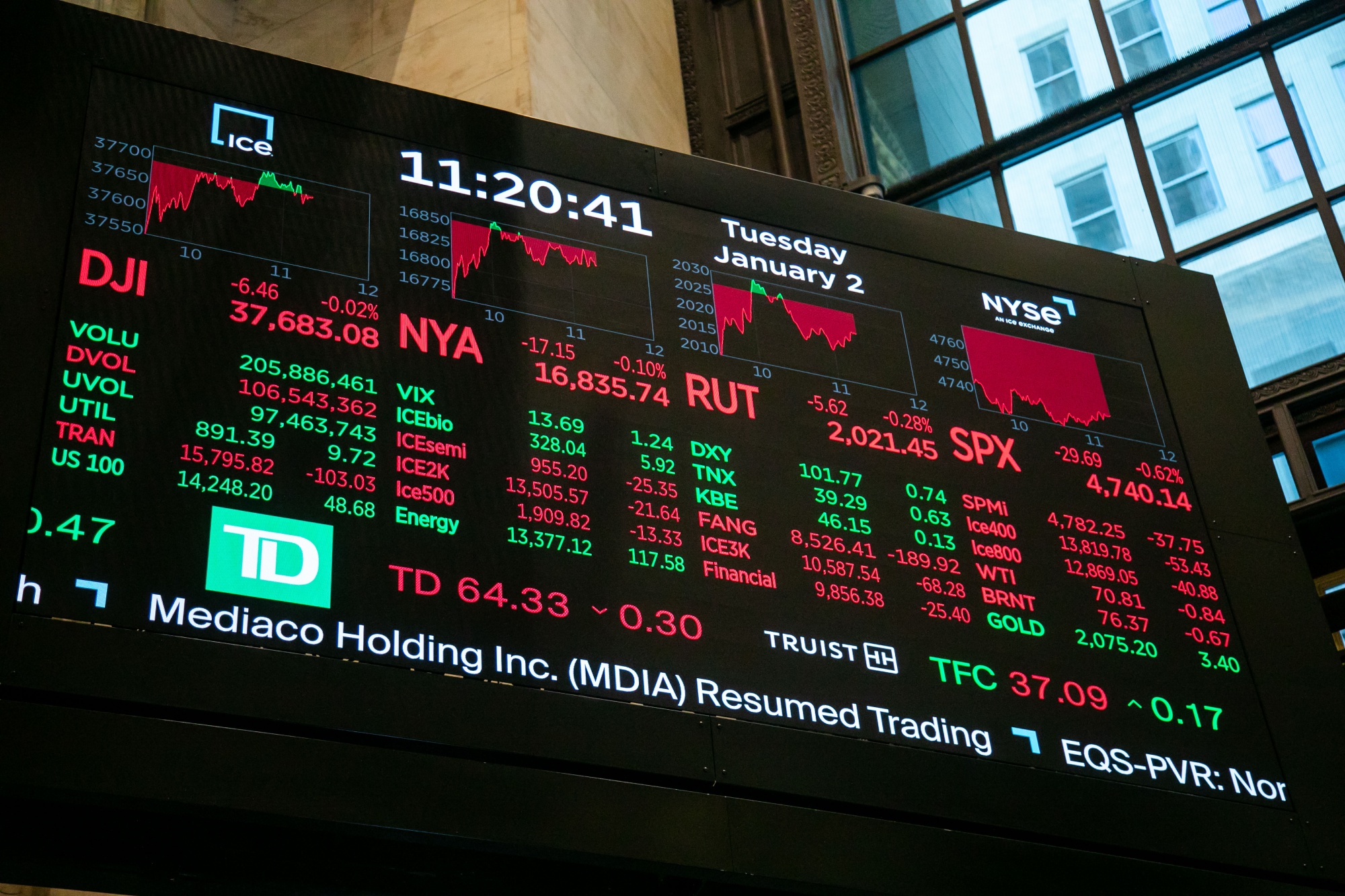Are High Stock Market Valuations Cause For Concern? BofA Says No.

Table of Contents
BofA's Rationale for a Positive Outlook
Bank of America's analysis paints a surprisingly optimistic picture, despite the seemingly high stock market valuation. Their positive outlook rests on several key pillars:
-
Strong Corporate Earnings: BofA cites robust corporate earnings as a primary justification for current valuations. Many companies have exceeded expectations, demonstrating resilience in the face of economic headwinds. This strong performance suggests that the current market valuation reflects real underlying value, rather than solely speculative exuberance. Analyzing individual company earnings reports and their future projections is crucial for a complete understanding of the market.
-
Projected Economic Growth: The report highlights the potential for continued economic growth, despite persistent inflationary pressures. While inflation remains a concern, BofA's analysis suggests that the economy possesses sufficient underlying strength to navigate these challenges. This projection considers factors like ongoing consumer spending, business investment, and government policy.
-
Interest Rate Impact Assessment: BofA's analysis thoughtfully considers the impact of interest rate hikes on future earnings. While higher rates increase borrowing costs for companies, the bank's models suggest that the impact on corporate profitability will be manageable, at least in the near term. This analysis considers the different sensitivities of various sectors to interest rate changes.
-
Technology and Innovation as Growth Drivers: The report also acknowledges the significant role of technology and innovation in driving future growth. Investments in emerging technologies, such as artificial intelligence and renewable energy, are seen as potential catalysts for continued market expansion. This forward-looking perspective emphasizes the long-term potential of the market, irrespective of short-term fluctuations.
-
Historical Context: BofA's analysis places the current high valuations within a historical context, examining past periods of elevated market valuations and their subsequent performance. This comparative analysis helps to contextualize current concerns and provides a more balanced perspective on the potential risks and rewards. Understanding historical market cycles is vital for informed investment decision-making.
Counterarguments and Potential Risks
While BofA presents a positive outlook, it's crucial to acknowledge potential counterarguments and risks associated with high stock market valuations.
-
Market Correction Potential: Even with a positive outlook, the potential for a market correction remains a realistic concern. High valuations inherently increase the likelihood of a pullback, and investors should prepare for such a possibility.
-
Valuation Metrics Scrutiny: Various valuation metrics, including the Price-to-Earnings ratio (P/E ratio) and the Cyclically Adjusted Price-to-Earnings ratio (Shiller PE), should be carefully examined. Elevated values in these metrics suggest that the market may be overvalued relative to historical norms. Understanding these metrics is crucial for conducting a proper risk assessment.
-
Geopolitical and Inflationary Risks: Unexpected geopolitical events or further inflationary spikes could significantly impact market performance. These unforeseen circumstances highlight the inherent uncertainty associated with market investing, and diversification plays a crucial role in managing such risks.
-
Asset Class Vulnerability: Different asset classes react differently to market downturns. Understanding how bonds, real estate, and other investments might behave during a correction is essential for a well-rounded investment strategy. This nuanced understanding helps investors make informed choices about asset allocation.
-
Sector-Specific Overvaluation: Certain sectors might be more susceptible to overvaluation than others. Thorough analysis of individual sectors is necessary to identify potential pockets of risk within the broader market. Due diligence is critical to avoiding overexposure to high-risk sectors.
Strategies for Navigating High Valuations
Navigating high stock market valuations requires a well-defined investment strategy:
-
Portfolio Diversification: Diversifying your portfolio across different asset classes and sectors is paramount to mitigating risk. Don't put all your eggs in one basket; a well-diversified portfolio can help cushion the impact of potential market corrections.
-
Risk Management Techniques: Employing risk management techniques, such as stop-loss orders and hedging strategies, can further protect your investments in a volatile market. Understanding your risk tolerance and implementing appropriate measures is crucial.
-
Long-Term vs. Short-Term Perspective: Long-term investors should be less concerned with short-term market fluctuations and focus on their long-term investment goals. Short-term traders, however, may need to adjust their strategies more frequently in response to market changes.
-
Strategic Asset Allocation: Adjusting your asset allocation based on your risk tolerance and market conditions is key. Rebalancing your portfolio periodically can help maintain your desired risk profile.
-
Value vs. Growth Stocks: Consider shifting towards value stocks, which may offer better risk-adjusted returns in a market with high valuations. Growth stocks, while potentially lucrative, often exhibit higher volatility.
Conclusion
While high stock market valuations understandably raise concerns, BofA's analysis suggests a cautiously optimistic outlook, supported by robust corporate earnings and projections of continued economic growth. However, potential risks, such as market corrections and unforeseen geopolitical or economic events, remain significant factors. Investors shouldn't solely rely on one perspective; independent analysis is critical.
Understanding the nuances of high stock market valuations is crucial for making informed investment decisions. Don't let fear dictate your actions; instead, conduct thorough research, develop a well-diversified investment strategy that aligns with your risk tolerance and long-term financial goals, and stay informed about market trends. Learn more about managing your investment portfolio in the face of high stock market valuations today!

Featured Posts
-
 Wynne Evans Reveals Recent Illness Future Performances Uncertain
May 10, 2025
Wynne Evans Reveals Recent Illness Future Performances Uncertain
May 10, 2025 -
 International Transgender Day Of Visibility 3 Ways To Be A Better Ally
May 10, 2025
International Transgender Day Of Visibility 3 Ways To Be A Better Ally
May 10, 2025 -
 Manchester Castle Hosts Huge Music Festival Featuring Olly Murs
May 10, 2025
Manchester Castle Hosts Huge Music Festival Featuring Olly Murs
May 10, 2025 -
 The Impact Of Figmas Ai Update On The Design Landscape
May 10, 2025
The Impact Of Figmas Ai Update On The Design Landscape
May 10, 2025 -
 Luxury Car Sales In China Bmw Porsche And The Competitive Landscape
May 10, 2025
Luxury Car Sales In China Bmw Porsche And The Competitive Landscape
May 10, 2025
